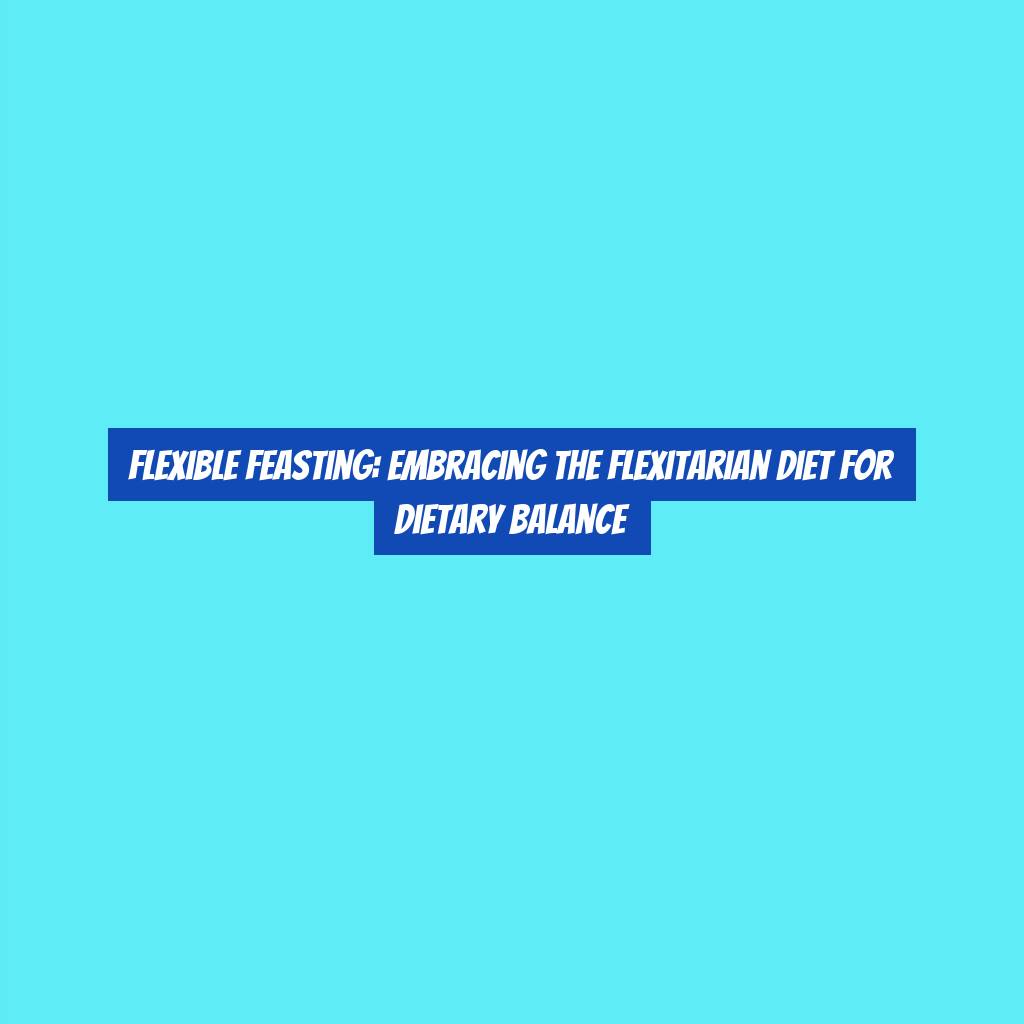Flexible Feasting: Embracing the Flexitarian Diet for Dietary Balance
You may not be aware that the flexitarian diet is gaining popularity as a flexible and sustainable approach to eating. By incorporating more plant-based foods into your meals while still allowing for occasional consumption of animal products, the flexitarian diet offers a balanced and realistic way to improve your overall health.
But what exactly does it involve, and how can it benefit you? LetG??s explore the concept of flexible feasting through embracing the flexitarian diet for dietary balance, and discover how it could be a game-changer for your well-being.
Understanding the Flexitarian Diet
What exactly is the Flexitarian diet and how can it benefit you?
The Flexitarian diet is a flexible approach to eating that focuses on plant-based foods while allowing for occasional meat and other animal products. This diet emphasizes fruits, vegetables, whole grains, and plant-based proteins like beans and tofu.
By incorporating more plant-based foods into your diet, you can benefit from increased fiber, vitamins, and minerals while reducing your intake of saturated fats and cholesterol. This can lead to better heart health, improved digestion, and a reduced risk of certain chronic diseases.
The Flexitarian diet also promotes environmental sustainability by reducing the overall demand for animal products. Additionally, this approach to eating allows for flexibility and enjoyment, making it easier to maintain in the long term.
Benefits of Flexitarian Eating
The benefits of flexitarian eating include improved overall health and a reduced environmental impact through a focus on plant-based foods while allowing for occasional meat and other animal products.
By incorporating more fruits, vegetables, whole grains, and legumes into your diet, you can increase your intake of essential nutrients, fiber, and antioxidants. This can lead to better digestion, weight management, and a lower risk of chronic diseases such as heart disease, diabetes, and certain types of cancer.
Additionally, the emphasis on plant-based foods in the flexitarian diet can contribute to lower greenhouse gas emissions and reduced water usage compared to traditional meat-heavy diets, making it a more environmentally sustainable choice.
Another benefit of flexitarian eating is the flexibility it offers. You have the freedom to enjoy occasional servings of meat and other animal products, allowing for a more balanced approach to your dietary choices. This can make it easier to transition to and maintain a healthy eating pattern, as it doesnG??t require strict elimination of certain food groups.
Embracing a flexitarian diet can provide you with the best of both worlds – improved health and a positive environmental impact – while still allowing you to savor your favorite meat-based dishes on occasion.
Tips for Transitioning to a Flexitarian Lifestyle
To embrace a flexitarian lifestyle, start by incorporating more plant-based foods into your diet while allowing for occasional servings of meat and other animal products. Begin by designating certain days of the week as meatless and gradually increase the frequency as you become more comfortable with plant-based meals. Experiment with new recipes that feature a variety of vegetables, legumes, and whole grains.
Consider starting with familiar meatless dishes such as veggie stir-fries, hearty bean soups, or colorful grain bowls to ease the transition. When preparing meals, aim to make vegetables the focal point and use meat as a flavor enhancer rather than the main component. Explore different cooking methods like grilling, roasting, or saut+?ing to bring out the natural flavors of plant-based foods.
Additionally, try substituting meat with alternative protein sources such as tofu, tempeh, or seitan in your favorite recipes. As you progress, pay attention to how your body feels and adjust your dietary choices accordingly. Remember, the goal is to find a balanced approach that works for you and supports your overall well-being.
Flexitarian Meal Planning and Recipes
Considering your dietary goals and preferences, creating a flexible meal plan that incorporates a variety of plant-based recipes alongside occasional meat or animal product dishes can help you maintain a balanced and sustainable approach to eating. When planning your flexitarian meals, keep in mind the following tips:
-
Explore Plant-Based Proteins: Incorporate a diverse range of plant-based proteins such as lentils, chickpeas, quinoa, and tofu into your meals to ensure you meet your protein needs.
-
Embrace Whole Grains: Opt for whole grains like brown rice, quinoa, and whole wheat pasta to add fiber, vitamins, and minerals to your diet.
-
Get Creative with Vegetables: Experiment with different vegetables to add color, flavor, and nutrients to your meals. Roasting, grilling, or stir-frying veggies can enhance their taste and appeal.
-
Plan Meatless Days: Designate specific days of the week for meatless meals to encourage the consumption of plant-based foods and reduce reliance on animal products.
Embracing Flexitarianism for Long-Term Health
Embrace a flexitarian lifestyle for long-term health by prioritizing a balanced intake of plant-based foods and occasional meat or animal products. This approach can contribute to overall well-being by providing essential nutrients, promoting weight management, and reducing the risk of chronic diseases.
Plant-based foods are rich in fiber, vitamins, minerals, and antioxidants, which support digestive health, immune function, and cellular protection. By incorporating a variety of fruits, vegetables, whole grains, legumes, nuts, and seeds into your meals, you can enhance your nutrient intake and lower the intake of saturated fats and cholesterol often associated with high meat consumption.
Additionally, reducing the frequency of meat consumption and choosing lean cuts or opting for plant-based protein sources can positively impact heart health and aid in maintaining a healthy weight. Embracing a flexitarian approach also allows for dietary flexibility, making it more sustainable in the long run compared to restrictive diets.
Conclusion
In conclusion, embracing a flexitarian diet can provide you with the flexibility to enjoy a variety of foods while still reaping the health benefits of a plant-based diet.
By incorporating more plant-based meals into your routine and gradually reducing your consumption of animal products, you can achieve a more balanced and sustainable approach to eating.
With the right strategies and meal planning, you can successfully transition to a flexitarian lifestyle and improve your overall health in the long run.


